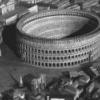Posted 01 December 2006 - 07:15 PM
Excellent find bill007. I knew I had heard about that. So it was actually a poison pellet that the umbrella had fired into him. A true-life incident certainly worthy of James Bond:
"Georgi Markov was a Bulgarian writer who lived in his home country until 1969, when at the age of 40 he defected to the west. Living in London, he worked as a broadcast journalist for the BBC, radio free Europe, and the German Deutsche Welle. (Bernard Knight, 1979)
He had a large audience in Bulgaria, and his outspoken views against the ruling communist party were seen as the inspiration for Bulgarian dissident movements. The leader of the Bulgarian communist party, Zhivkov Todor, decided in June 1977 that he wanted Markov silenced, and informed a politburo meeting of his wishes. The job was given to the interior minister Dimiter Stoyanov, who requested KGB assistance. The KGB chairman Yuri Andropov agreed provided there would be no trail left to the Soviet Union. (Richard Cummings, 1996)
There were three attempts on Markovs' life. During a dinner party given by friends at radio free Europe, someone slipped a toxin into his drink, this and another attempt on his life in Sardinia failed. The successful attempt took place in London on September 7th, Zhivkov's birthday.
Markov worked a double shift at the BBC, and after working the early morning shift, returned home to rest. On returning to work he parked his car South of Waterloo Bridge and made his way to the bus stop to catch the bus to the BBC headquarters. As he neared the people queuing for the bus he felt a stabbing pain in his right thigh, he turned to see a man facing away from him stoop and pick up an umbrella. The man apologised in a foreign accent and departed hurriedly in a taxi. Markov latter described the man as thick set and about 40 years old. In pain Markov boarded the bus for work, where he told colleagues what had happened. He noticed a spot of blood on his jeans, and showed a friend a pimple like red swelling on his thigh. When he returned home he became very sick, with a high fever.(Bernard Knight, 1979)
The next day Markov was admitted to St James's hospital, Balham. Examination of hi right thigh showed a central puncture wound of about 2mm diameter, and a circular are of inflammation. A diagnosis of septicaemia was made at the time, due to the very high leukocyte count, 33 000 per cubic mm. Mr Markov died on the third day after the injury was inflicted.
During the post-mortem a single metal sphere the size of a pinhead was excised from the wound. It was 1.52 mm in diameter and composed of 90% platinum and 10% iridium. It had two holes bored through it, with diameters of 0.35mm, leaving 0.28 cubic mm available for toxin retention. (Richard Cummings, 1996)
Dr David Gall at the government chemical defence establishment Porton Down, hypothesised that ricin could be the only possible toxin used, owing to the exceptionally small dose and the symptoms.
After the fall of the Soviet Union it was revealed that ricin was used in an umbrella mechanism for injecting poison spheres into a victim, which was developed in the secret KGB laboratory "the Chamber". Two former KGB officers Oleg Kalugin and Oleg Gordievsky publicly admitted to Soviet involvement. It was reported that the Bulgarians used a low-level Italian criminal to carry out the murder. The man was located in Denmark but questioning remained inconclusive; he then fled to Hungary and the Czech republic. His whereabouts are unknown. (Richard Cummings, 1996)"





